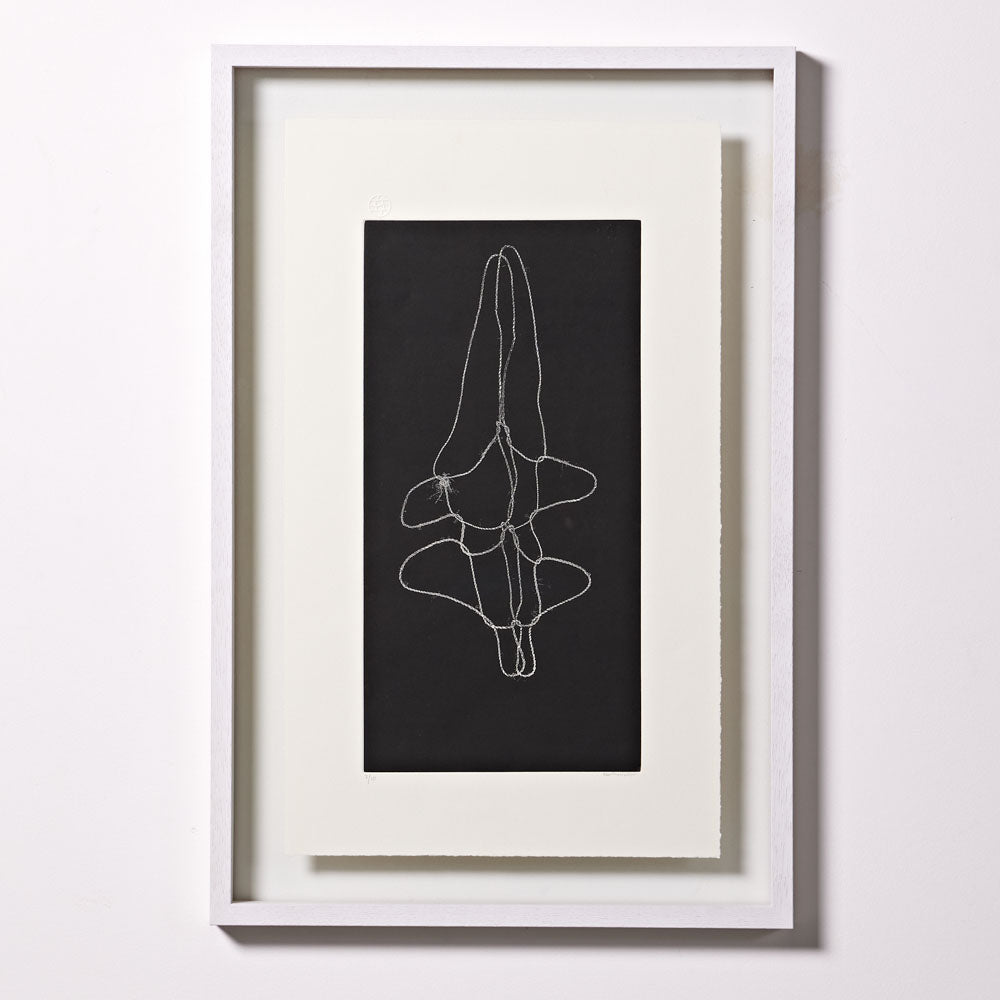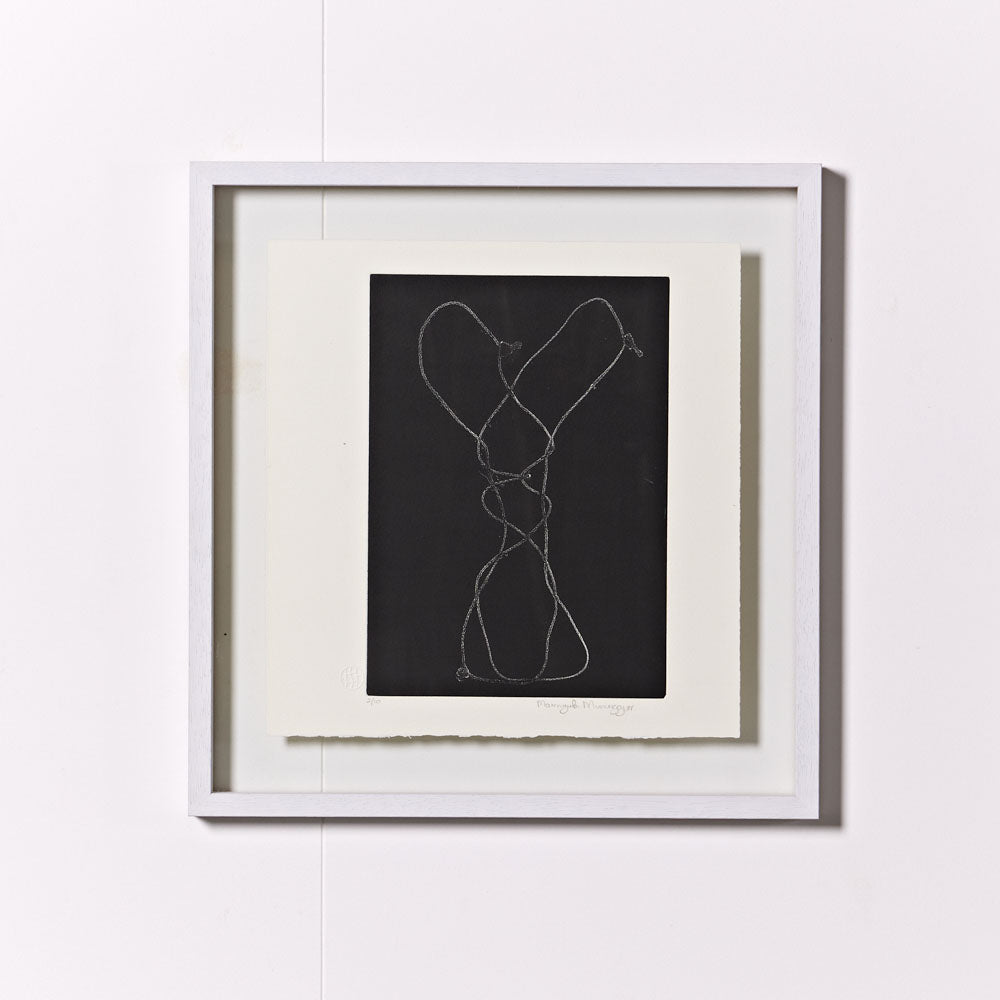Impact
Koskela Gallery presents Prints & Poles by Buku-Larrŋgay Mulka Centre
Koskela Gallery presents Prints & Poles by Buku-Larrŋgay Mulka Centre
Aboriginal and Torres Strait Islander viewers please advise the following article contains names of deceased.
The Koskela Gallery's fourth exhibition of the year, Prints & Poles opens this Saturday 7th August and is showing until September 12th. A virtual exhibition featuring a collection of works from Buku-Larrŋgay Mulka Centre.
Located 700km east of Darwin in Yirrkala, a small Aboriginal community in North Eastern Arnhem Land, Buku-Larrŋgay Mulka Centre is a First Nations owned and run hub of creativity.
Prints & Poles showcases this creativity; featuring an array of larrakitj and works on paper including a selection of etchings, which highlight the culturally rich and diverse practice of Yolŋu artists.
The name of Buku-Larrŋgay Mulka Centre derives from:
- Buku-Larrŋgay – the feeling on your face as it is struck by the first rays of the sun
- Mulka – a sacred but public ceremony
The Larrakitj had its traditional use for the Yolŋu people as an ossuary or bone container erected as a memorial to a dead kinsman up to a decade after death. A further role for this cultural form is as a fine art object and an instructional tool for younger generations.


Artworks of this nature have multiple layers of metaphor and meaning which give lessons about the connections between an individual and specific pieces of country (both land and sea), as well as the connections between various clans but also explaining the forces that act upon and within the environment and the mechanics of a spirit’s path through existence.
The string figure etchings are the third series of prints made as a result of the Yirrkala community’s reconnection with matjka – a field of knowledge retention passed down through the use of string figures.


First the string was made from the pounded and softened inner bark of Darraŋguḻk (Kurrajong) and then separated fibres are twined on the thigh and the retwined into a two-ply string. In Yirrkala, the string figures were transferred by the artists from their hands to cardboard supports and then using a soft-ground etching technique pressed, leaving an imprint capturing the fine textured detail of the bush string.
The Yolŋu artists from Buku-Larrngay Mulka Centre demonstrate ingenuity, resourcefulness and creativity in their practice which has resulted in a range of spiritually significant and impressive works.
Artworks of this nature have multiple layers of metaphor and meaning which give lessons about the connections between an individual and specific pieces of country.
Meet the artists
Malaluba Gumana
Malaluba lived a life full of family and art, she sadly passed away in 2020. Malaluba was a mother of seven children, a master of the marwat – the cross-hatching technique and expressive painter. Her works are renowned across the nation, selling out numerous exhibitions with a permanent display of her larrakitj at the Art Gallery of NSW.
However, what she is often most remembered by to those that knew her was her cheerful and gentle manner no matter what stresses were coming her way.
Marrnyula Munuŋgurr
Marrnyula has been involved with Buku-Larrngay Mulka Centre since the 1980s. She still resides at Yirrkala to work at Buku-Larrŋgay Mulka as an artist and senior printmaker in the Printspace. Marrnyula is a celebrated and award-winning artist nationally recognised for her contemporary art making.
As well as being an artworker she was brought up in one of the most artistically prolific camps in Yirrkala over this period. Both her mother Noŋgirrŋa and her father Djutjadjutja (dec. c.1935-1999) were constantly producing art with the help of their sons and daughters. She grew to assist her father (winner of the 1997 Best Bark painting prize National Aboriginal and Islander Art Award) with his sacred Djapu paintings as well as developing her own style of narrative naive painting.

Muluymuluy Wirrpanda
Muluymuluy is a celebrated bark artist who often works with her family to produce important Madarrpa clan paintings. She holds extensive knowledge of native plants of North East Arnhem Land and her artwork embodies this knowledge.
Amongst the plant species represented in her works, are berries, yams and other edible species including Buwakul (native grape), Dilminyin (scaly ash), and Ganguri/Manmuna (long yam). Her bark paintings depict Bulwutja, which grows in and around the billabongs and swampy areas on Madarrpa land. The plants grow in clumps after the rains and are pulled out in clumps, cooked underground or on coals, then mashed into a blackish grey paste that is tasty and nutritious.


Mulkuṉ Wirrpanda
Mulkun is a senior artist of the Dhuḏi-Djapu clan from Dhuruputjpi, in Eastern Arnhem Land who sadly passed away this year. As the eldest and most knowledgeable of her clan, she was acknowledged as a leader, one of the few Yolŋu women to have this status.
Mulkuṉ Wirrpanda was a classificatory daughter of the late Dhäkiyarr Wirrpanda and mother (by kinship) to senior artist and clan leader Djambawa Marawili. Mulkuṉ painted Dhuḏi-Djapu miny’ji (sacred designs) that depicted her land at Dhuruputjpi, including the areas of Yalata and Darraŋgi.
Mulkun’s artistry spans across many mediums: bark, ḻarrakitj (memorial poles), yiḏaki (didjeridus) and she was a talented carver, weaver, and print maker. Each one of Mulkuṉ’s projects led on from the other naturally, creating a unique body of work that showcases the artist’s passion for revitalising, maintaining, and sharing Yolŋu cultural knowledge.
One of Mulkuns passions was exploring lesser-known edible plant species, she wanted to paint and tell stories about the food that she grew up which she feared would be forgotten by younger generations.
Nawurapu Wunuŋmurra
Nawurapu is an internationally recognised contemporary Aboriginal artist with works in museums across Australia and the world. Learning from his iconic father, the late Yaŋgarriny Wunuŋmurra, Nawurapu gained spiritual authority through his practice.
His father was one of the senior Yirritja moiety elders. Since his passing, Nawurapu has stepped into this senior role with his brothers. With his ceremonial responsibilities he is required to move between the homeland centres of the Miwatj region, North East Arnhem land and even beyond into Central Arnhem land. He has lived at Yirrkala, Gurrumurru, Gangan, Gapuwiak and Wandawuy in recent years.
In early 2013 he suffered the amputation of his right foot below the knee as the result of an injury. But typically, this did not diminish his strength or vigour. Through the course of that year he accomplished a full rehabilitation and continued to harvest timber from the bush in remote areas and work it. His proud spirit remained undimmed and undiminished.
Djätji Garrawurra Djätji is an emerging artist and ranger at Buku-Larrŋgay Mulka Centre. His father is from Milingimbi and his mother is from Elcho Island. Artistry runs in his family, with the grandfathers on his father’s side known for their great art and massive fish traps. Djätji began art making from school and continues to practice even though he is now a ranger.
Wanharrawurr Munuggurr Wanharrawurr is a young, emerging artist and athlete who is proudly the grandson of Guykuda. He has submitted his first print to this exhibition. Wanharrawurr plays football for Djarrak in Yirrkala and was recently selected to attend the 2019 NAB AFL Under 16 National Championships after being named in the NT Thunder Under 16 squad.
Do you have any questions? Get in touch today, and we will connect you with the right person in our team.
Koskela is proud to be the first furniture and homewares company in Australia to be a Certified B Corporation®.




